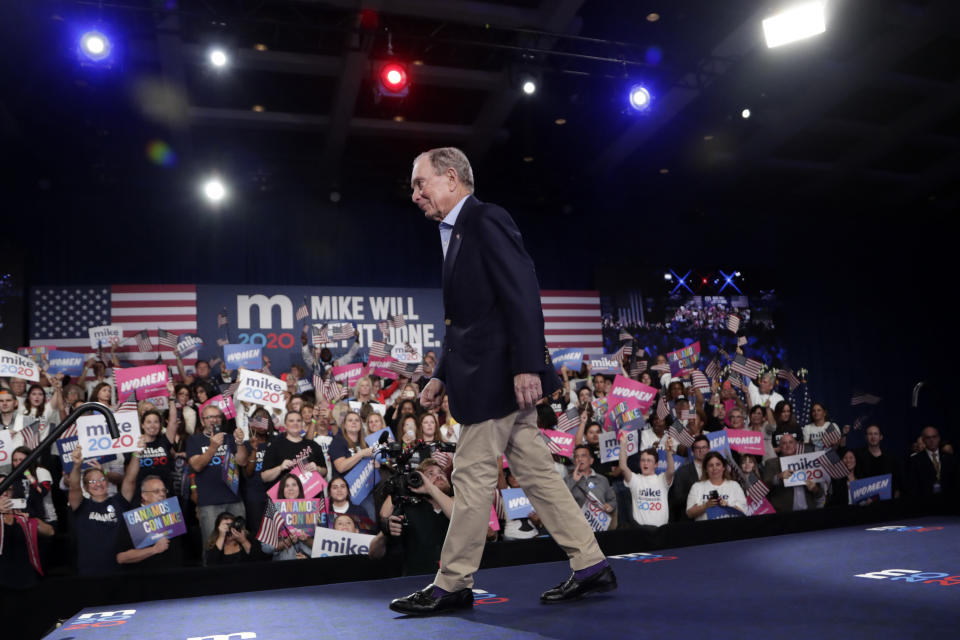Mike Bloomberg's Campaign Ends As One Of The Biggest Product Flops In History
Mike Bloomberg spent more than half a billion dollars of his own money on a Democratic presidential run and dropped out with just 44 delegates to show for it, as of the time of publication. The billionaire former New York City mayor’s campaign, the most expensive presidential primary campaign in history, will go down as one of the most expensive product launch flops ever.
In the end, it is likely Bloomberg will have spent more than $600 million through Super Tuesday. That breaks down to about $13.6 million per delegate, based on the delegate count of The Associated Press and NPR.
He spent more than $500 million on television and online advertising, including nearly $200 million just in the Super Tuesday states. That bought him a victory in the Pacific island territory of American Samoa, but he finished outside the top two in every other state.
Bloomberg could run only because he is one of the richest men in the world. He spent just 1% of his estimated $62 billion fortune to buy an unprecedented media hype campaign.
It won him a seat on the Democratic Party presidential debate stage and the ability to campaign across more states at once than any other candidate. But, in the end, when voters actually saw the product hyped across television and Instagram, they chose not to buy it. It comes as no surprise that Bloomberg’s social media influence campaign was run by the same company that helped hype the 2017 Fyre Festival.

Bloomberg’s rationale for his campaign was that former Vice President Joe Biden’s underfunded campaign would fall apart leaving no moderate alternative to Sen. Bernie Sanders (I-Vt.). That rationale imploded with Biden’s broad victory in South Carolina on Saturday.
But even before that, Bloomberg fell flat. His Wizard of Oz media hype campaign brought him great attention and apparent support, but when he stepped out from behind the curtain and onto the debate stage he was left deflated. Super Tuesday revealed a yawning gap between those who voted early for Bloomberg and those who voted on Tuesday ― his primary day support tanked.
When Bloomberg was in the race, Sen. Elizabeth Warren (D-Mass.) immediately punctured him as a misogynist in the mold of President Donald Trump and the architect of racist criminal justice policies. His bloodless anti-charisma may be loved by pro-business centrists, but it muted the positive earned media he received through his massive television ad buys and tongue-in-cheek social media influencer campaign.
Warren may have delivered the kill shot that popped the Bloomberg balloon, but his campaign’s cash-fueled bloat was also bound to cause problems.
Like any product rushed to market, Bloomberg’s campaign was loaded down with bugs and poorly thought out ideas. He hired a massive staff with corporate-level salaries, but some of these staffers were more enthusiastic about the paycheck than the candidate. The campaign opened dozens of offices, but some were never fully staffed. His punchy social media campaign often resulted in unforced errors requiring the deletion of tweets and posts.
And while it all ended with a historic flameout, Bloomberg still showed that a billionaire can spend just a tiny fraction of their wealth for significant political influence. The cost of the election loss won’t matter for Bloomberg. He will likely make back the $600 million he spent just on compound interest alone before November’s general election.
Related...
Michael Bloomberg Drops Out Of Presidential Race, Endorses Joe Biden
The Suburban Surge That Helped Save Joe Biden
5 Takeaways From Super Tuesday's Democratic Presidential Race
Also on HuffPost
Love HuffPost? Become a founding member of HuffPost Plus today.
This article originally appeared on HuffPost.

